
Hi-Fi RUSH (PC) - Review
by Paul Broussard , posted on 27 February 2023 / 10,819 ViewsIt's certainly been one heck of a month for shadow dropping titles, with both Metroid Prime Remastered and Hi-Fi RUSH being casually dropped on our laps with essentially no notice. I probably shouldn’t be complaining; I’ve frequently lambasted companies for announcing games and then providing an interminably long wait for hype to build up, only for the eventual product to inevitably fall short of the now-unrealistic expectations. That said, I don’t think a week or two of notice would go unappreciated? Just so I can plan out my evenings and not have to call off my very invasion of East Caledonia at the last moment so I can get the reviews in. Thanks game companies.
My propensity to complain about everything aside, another trend that seems to be popular this month is creating a game by combining action with another, very different genre. But instead of trying to make fast-paced punching roommates with slow, methodical detective work, Hi-Fi RUSH takes the perhaps more sensible route and combines action with something just as fast-paced: rhythm games. In a mysterious corporate hellscape where everyone is named after Starbucks frappuccino flavors, we play as a complete tosser named Chai who volunteers for a robotic arm replacement from one of those evil corporations. After a “minor” mistake in the procedure, Chai winds up with both the mechanical arm and an iPod inside of his chest. This mistake results in the corporation wanting him dead for… reasons that aren’t explained particularly well, but who cares, it’s as good an excuse as any to smash some robots. Chai soon encounters a mysterious woman called Peppermint, who helps him escape from danger; the two then team up to figure out what’s going on behind the scenes and what the corporation’s intentions really are.

Being an action title, you shouldn’t go into this expecting Oscar quality writing. That said, Hi-Fi RUSH has a surprisingly enjoyable cast of characters and, broadly speaking, some pretty enjoyable banter between them. There are a few lines that wound up being misses for me, such as the joke where the game tries to play off a tutorial-heavy part of a level as “this is just like a video game,” but any release that attempts to employ humor frequently is bound to have a few misses. It probably speaks to the quality of the writing that one particularly on-the-nose segment mocking production managers still came off as really funny despite how unsubtle it was about everything. There are also a few fun references scattered throughout, like a pair of robots that resemble the protagonists of the Evil Within. On the whole, the characters are charming, easy to root for, and fun to watch.
The voice acting is surprisingly great too; Robbie Daymond shows off some serious range in vocal talent switching from his usual “menacing” characters like Goro Akechi (Persona 5) and Tianyou Zhao (Yakuza: Like a Dragon), to lend Chai a laidback, head-in-the-clouds feel. Erica Lindbeck delivers a strong supporting performance as Peppermint, and Gabe Kunda, Misty Lee, and Sarah Elmaleh also deserve serious props. I’m almost certain that no one on this list will get genuine consideration for voice actor awards come the end of the year, largely because of how small-budget the title is, and frankly that’s a real disappointment. Awards or not, though, the cast of Hi-Fi RUSH delivers in spades.
The action’s what we’re here, for, though, and in that respect Hi-Fi RUSH mostly delivers. Combat with Chai largely revolves around smacking various robots over the head with a makeshift guitar until they die, and the moveset for doing so is decently expansive, with a variety of combos that you can get from stringing different light and heavy attacks into each other. The biggest complaint on this front is that despite the diversity of attack strings, Hi-Fi RUSH struggles to differentiate them from each other beyond certain strings being able to launch enemies. As a result, there isn’t much extrinsic motivation to experiment once you’ve found a couple of strings that work well for you. It would’ve been nice to see the game mix things up on this front; maybe an attack string especially good at breaking stagger, or one that can break shields.
The big draw of the combat is perhaps not so much the variety on display, but the music. Hi-Fi RUSH is almost as much a rhythm game as it is an action one, and it incorporates musical elements by playing a constant beat. In battle, your attacks are directly tied to this beat; you won’t swing any faster (or slower) than the next beat. The thing is, if you time your inputs correctly, you get a boost in power and end-of-fight ranking. Other elements, like your dodge, also correspond to the beat; dodge in time with the rhythm and you can repeatedly dash over and over.
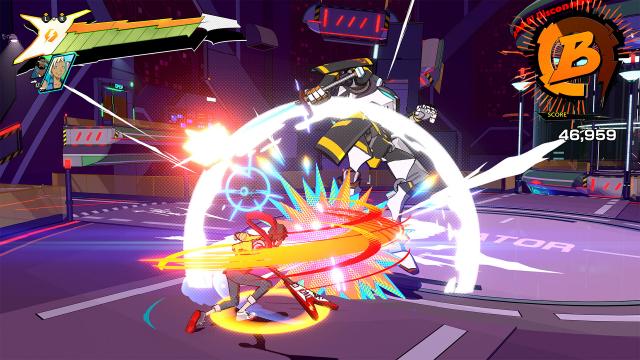
This is undeniably enjoyable. It’s not exactly complex game design, but there’s something very visceral and enjoyable about timing a string perfectly with the beat. It does a great job of providing feedback in this regard too, with a crowd cheering whenever you time an attack correctly. Slipping into a rhythm (pun intended) of lining up attacks and dodges with the beat is just plain fun. Action titles like Devil May Cry 5 have tied music pacing and intensity to player skill before, but making it an integral gameplay component is new - and it works great.
Having said that, the “feel” of the game is often undercut by some rather awkward and poorly implemented design choices. The biggest and most problematic comes via the implementation of Chai’s various partner characters. The gist of this mechanic is that, mid-fight, Chai can summon his partners out of thin air to perform a certain attack by pressing a button. These attacks don’t really interact all that well with Chai’s moveset; it’s difficult to combo off of them or use them as a finisher, so they’re already at a disadvantage, but where they really get problematic is the return of the dreaded color-coded enemies. Similar to their implementation in the DmC reboot, these enemies can (at least initially) only be harmed by using a specific partner that matches up with the enemy’s color type: enemies with a blue shield have to be shot, enemies with green armor have to be punched, and so on. Thankfully, unlike DmC, once their respective shield/armor is gone, you can just attack them normally, but it means that as you gain more partners and as the game progresses, more and more enemies with some sort of invincibility start to appear in combat, each often requiring you to use a different partner. It results in many very slow and tedious openings to engagements as you run around getting people vulnerable and trying to avoid damage. This would already be iffy design for a standard action title, but for one that’s intertwined its DNA with that of a fast-paced rhythm game, it’s a serious hiccup.

Enemy variety is also rather lacking as well. Basically every non-boss encounter is a humanoid grey robot of some fashion, and their attack patterns largely just boil down to annoying zoner or rushdown brawler. Perhaps I should be happy that Hi-Fi RUSH largely sticks to just a few tried and true archetypes, though, because when it does deviate, the enjoyability of combat plummets. Most of the unusual enemy designs pretty much exist solely to force you to use a specific mechanic, like a certain enemy that runs around surrounding other foes with shields that require a partner character to break, or another that slams the breaks on the fight when it reaches low health, tosses you into what might as well be a cut scene, and then forces you to parry a set of attacks in quick succession or it quite literally will not die.
Another rather questionable exclusion is the lack of any sort of lock-on mechanic, which can occasionally result in some frustration with Hi-Fi RUSH’s grapple mechanic and “magnetism” system. Chai gains a grapple hook early on that allows him to pull himself towards enemies, but the game’s ability to discern which enemy you want to move towards in a crowd is hit or miss, and you can often find yourself trying to follow up on one foe only to end up hurtling towards a giant repurposed piece of industrial farm equipment that desperately wants to flatten you with what I believe is an entire tractor trailer. It makes using the grapple an unnecessary gamble in any sort of confrontation with multiple foes. This ambiguity will also often cause Chai to attack towards a different enemy than the one you’re trying to hit, as if he was being magnetically pulled towards a separate target.
And that’s when it’s letting you fight at all. Many of Hi-Fi RUSH's twelve levels are each close to an hour in length, and that’s often not because they’re gauntlets of battle after battle. About half of that time in most cases is spent navigating the environment, which is just not that fun, frankly. The platforming controls are mediocre at best, and the minor puzzle-solving elements almost always boil down to just calling in a partner character when their icon pops up. Perhaps some of this could’ve been forgiven if its rhythm elements were infused with traversing the spaces between combat encounters, but with the exception of a few QTEs here and there, they largely go ignored. It seems like such a bizarre design choice to sell your game on this infusion of action/rhythm and then almost entirely drop those elements for around half of most missions’ run times.
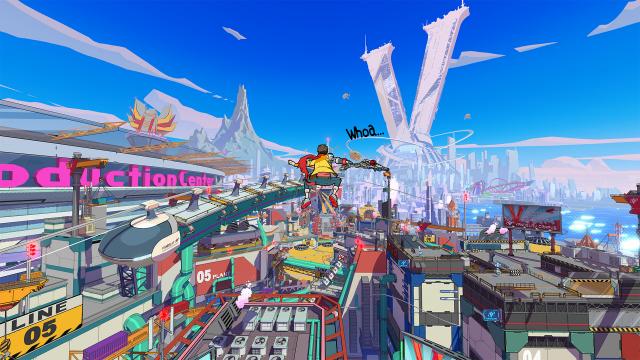
The inclusion of a couple of post-game options do make me more favorably inclined towards Hi-Fi RUSH. The first is the “Rhythm Tower,” and it works pretty similarly to the more modern incarnations of DMC’s Bloody Palace. You fight wave after wave of enemies with a timer ticking down; if your health is depleted or you let the timer hit zero then it's game over. Along with killing enemies, landing hits in time with the rhythm and parrying perfectly all increase your timer, so getting the rhythm aspect of the title down along with the action element is crucial. There are 60 floors in total, and it makes for a nice post-game wrap-up to the whole shebang.
There are also some doors that lead to discoverable secret missions. These only become available on a second playthrough and are usually fights with a weird extra condition, like having to stay airborne while taking out a group of foes. I’m not as favorable to these as the rhythm tower, but they’re still an interesting way to test your knowledge of the mechanics and allow you to push them to their limits.
Aesthetically, Hi-Fi RUSH certainly looks very pretty. There’s a slick, comic-book style of animation that works well, and the art style allows for some more exaggerated effects in combat that look and feel great. I’m reminded a bit of Jet Set Radio, a title with its own major emphasis on music, so perhaps some inspiration was taken from there. The music is also pretty great too, with the custom score by the developers being an easy contender for best soundtrack of the year. I’m not personally as big a fan of the licensed songs brought in; Nine Inch Nails, Number Girl, and similar bands have never really been my cup of tea, but I’m sure fans of theirs will find them to be a great inclusion. Best of all, Hi-Fi RUSH provides an option to switch between licensed or original soundtracks, so everyone can be happy (or maybe not quite everyone; my editor has informed me that as a NIN fan he doesn't like the tracks they included very much).
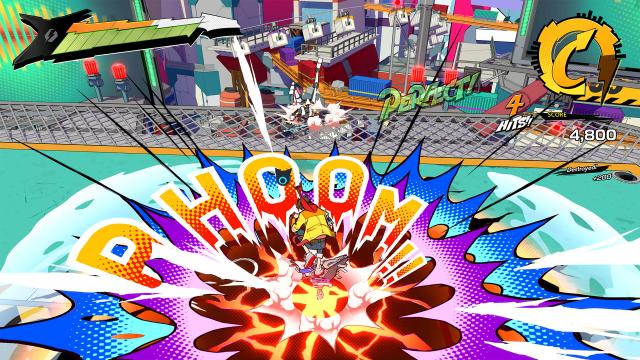
All in all, Hi-Fi RUSH is like a solid debut show for a new band. It’s pretty evident this is the team’s first action title in a while - there are more than a few mistakes on display - but it’s hard not to applaud the ingenuity and sheer fun-factor. It’s a title that I would love to see receive a sequel which primarily focuses on polishing its slip-ups, so it’s a shame that we may never get one with Shinji Mikami departing Tango Gameworks less than a month after Hi-Fi RUSH’s release. Oh well. At least his final concert was, for the most part, a good time.
You will probably like Hi-Fi RUSH if: You love action games and their soundtracks; and you especially love it when they work together to bring about over the top moments, like the introduction in Metal Gear Rising.
You might like Hi-Fi RUSH if: You care more about the "feel" or "experience" of an action game than technical complexity and a high skill ceiling.
You will probably not like Hi-Fi RUSH if: You don't have much patience for action games with gimmicks or extra fluff that gets in the way of the combat.
VGChartz Verdict
7
Good
This review is based on a copy of Hi-Fi RUSH for the PC
More Articles
This is one of the rare occasions I've played a game soon after release, so I think I'll throw in my 2 cents. I pretty much agree with the conclusion and score though I get there for slighly different reasons:
- I agree with your criticisms on the shields and armor, with the cooldown on your partner attacks they end up often breaking the flow, which is akward both from a rhythm and action perspective.
- I generally liked the sections in between combat, I think it's nice to have some downtime between the action and I think there's a decent mix of things to keep it fun both rhythm related and not (the rail sections and jump pads are quite nice)
- However one thing that I disliked both outside and inside combat is how slowly your character moves when not dashing and it feels like you're slowed down even further in the air. To move like a turtle in an action game is always gonna feel akward to me and I've had the same problem in the past with Bastion (which I otherwise love)
- I for one hated the Rhythm Tower and only gave it a few goes. The concept is fine but I don't like starting on a multiplier of less than 1x or that if you overestimate yourself and lose you have nothing to show for it but a default D rank, I think a decrease in multiplier would have been punishment enough for getting cocky. I don't really see any reason for the game to be stingy with its currency when you've already beaten it, especially since there's so damn much to spend it on, including cosmetics that are only unlocked post-game.
-
And one final critism is that I think it was a shame the game doesn't allow you to chose rhythm and combat difficulty individually when they are specifically stated as seperate elements when selecting a difficulty option. I think what I would have enjoyed most would be combat on hard and rhythm on loose but I had to settle for an inbetween.
So I had quite a few critisms, but the game was still definitely a fun time for the most part both in gameplay and story. 7 seems about right to me, so not fantastic or anything but since it's a pretty short and unique game I'm glad to have tried it nonetheless.








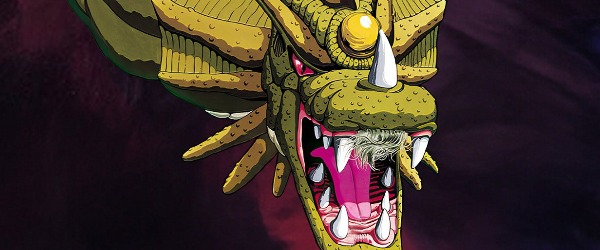


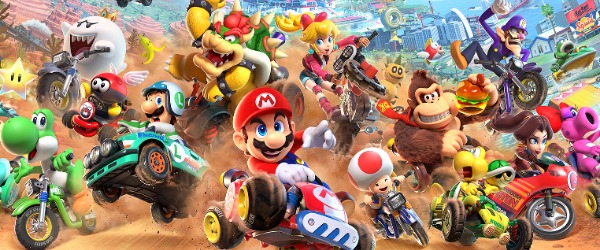












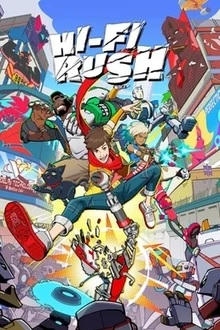



 Essay Pro
Essay Pro